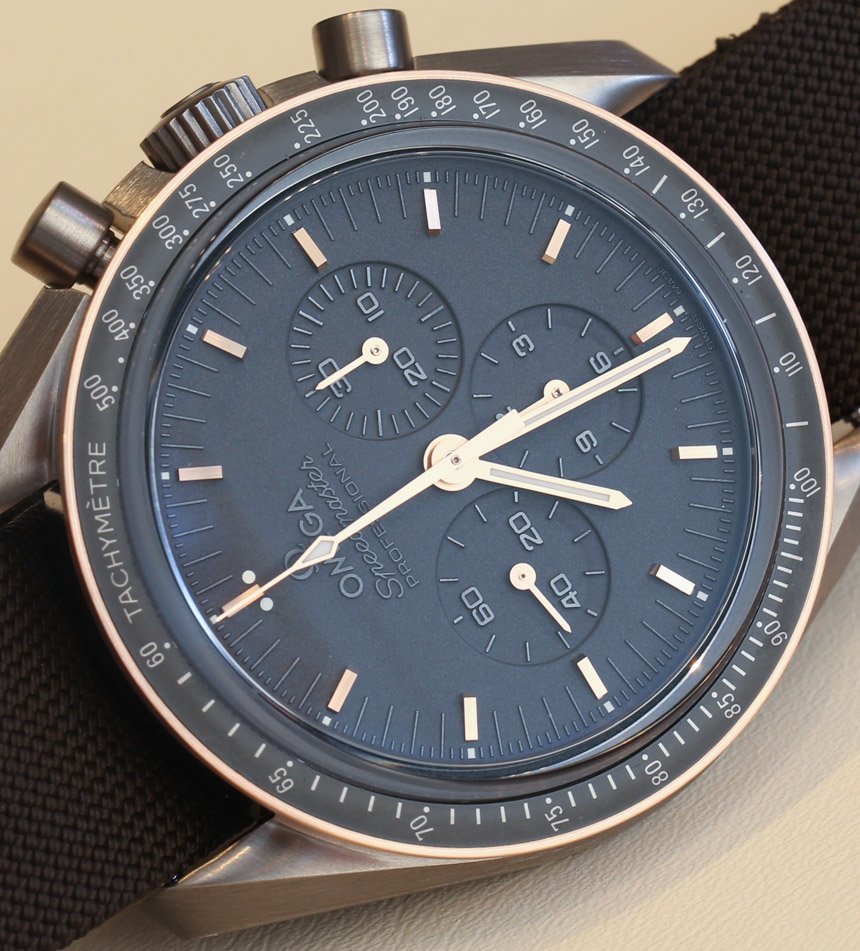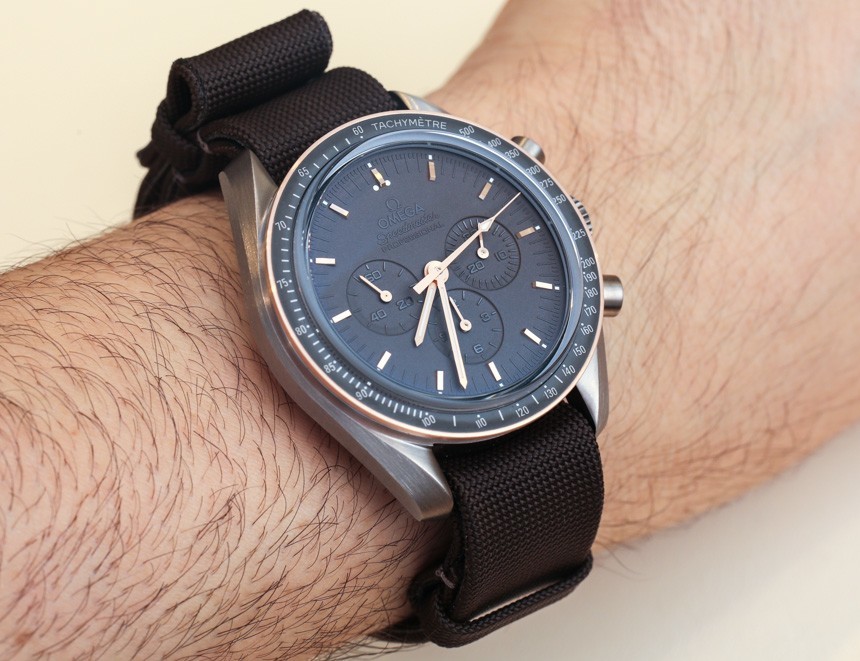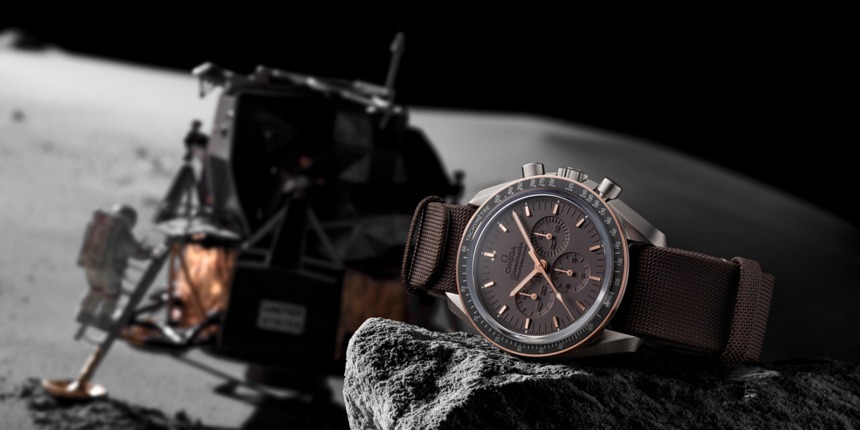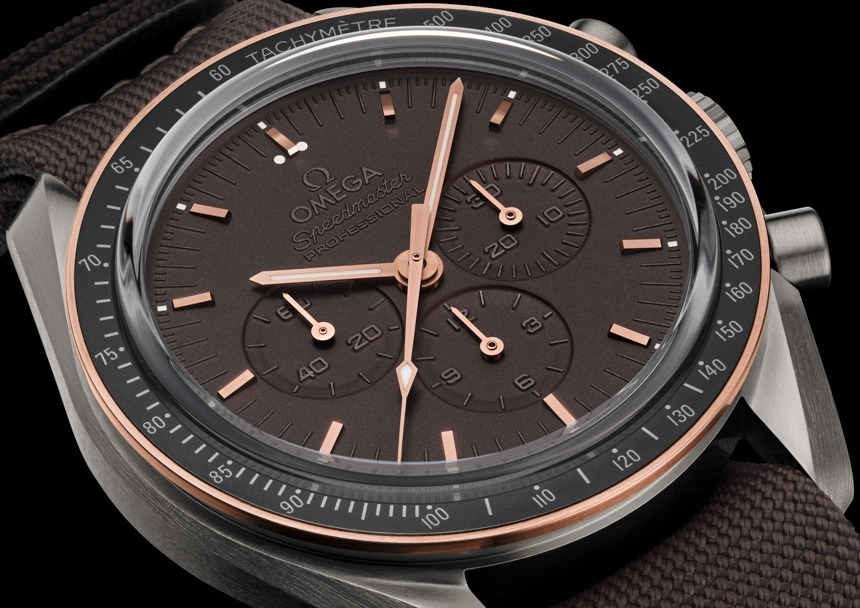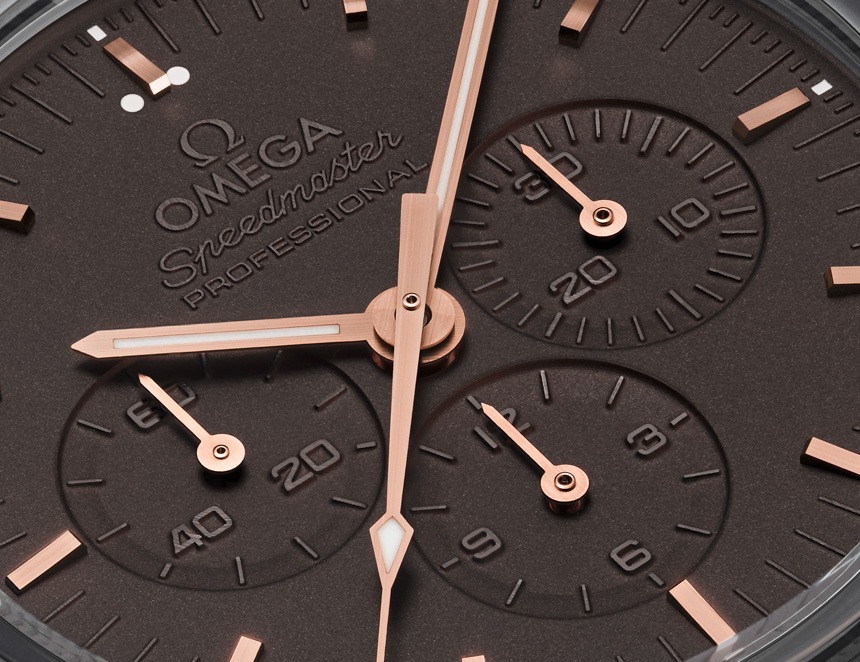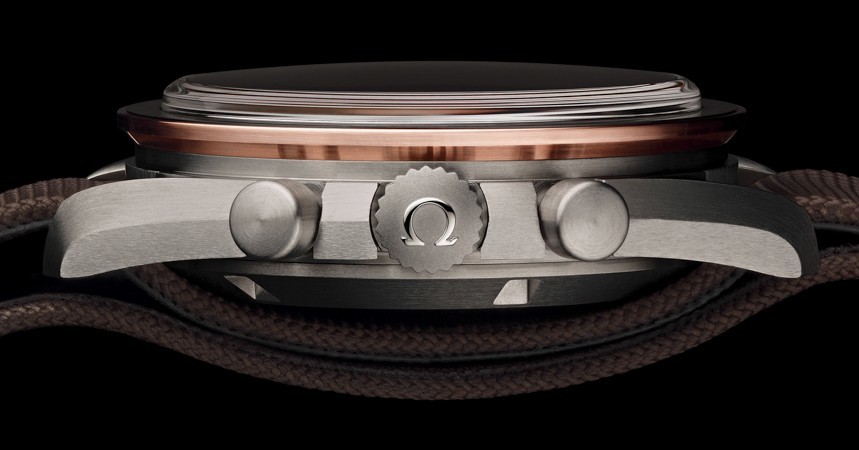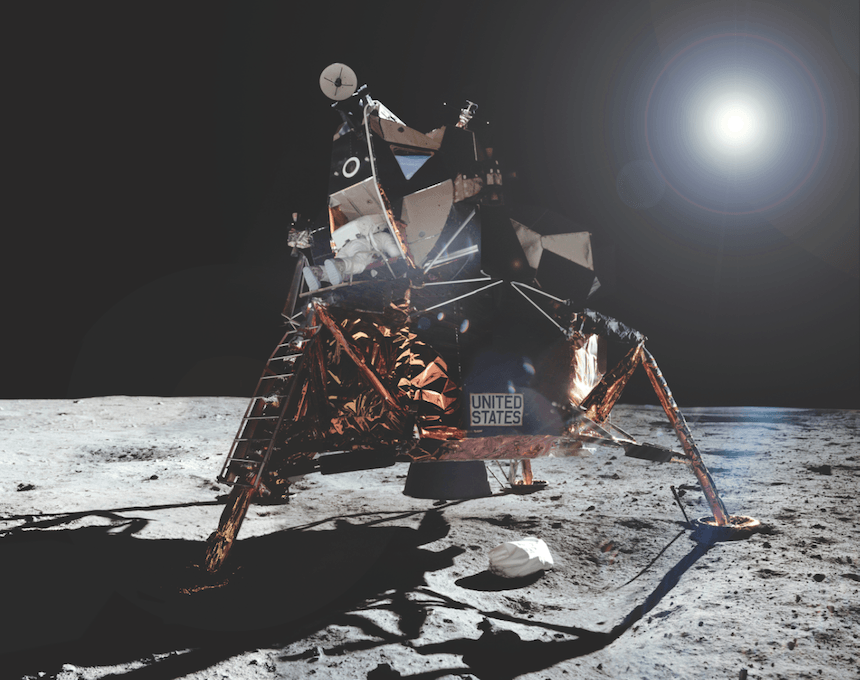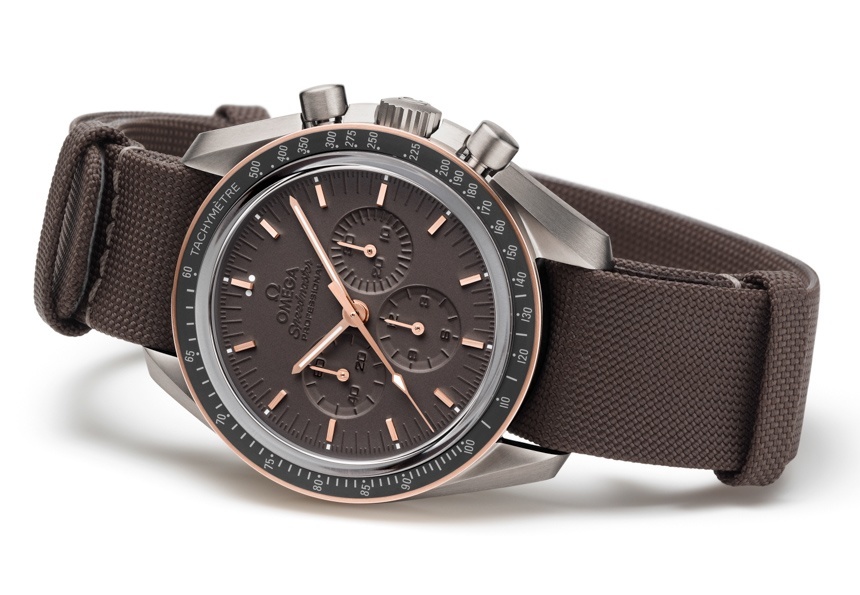
The 42 millimeter wide case is of grade-2 titanium which received a brushed finish on all its surfaces, hence matching a more professional appearance with a modern material that suits the theme of the watch. The more universally used version of titanium is referred to as grade-5 and if you were wondering what the difference is, grade-2 is actually pure titanium while the latter is an alloy that contains aluminum and vanadium in its structure. The experience should be nearly identical as both alternatives are incredibly light metals that generally make for improved wearing comfort.
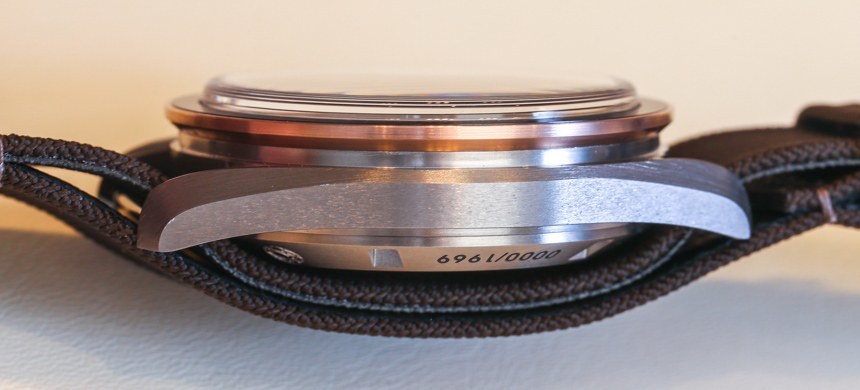
Adding a splash of color to the otherwise monochrome scene (although the Moon is not that much more colorful, either) is the 18K Omega Sedna gold bezel with a matt black ceramic ring and a tachymeter scale. Sedna gold is Omega’s proprietary alloy specially developed in an attempt to substitute normal red gold with a material that should be more durable and hence more beautiful in the long run.
An alloy of palladium, copper, and at least 75% of gold was found, and in the Omega Speedmaster Apollo 11 the Sedna gold bezel is used to imitate the gold shielding of the Lunar Landing Module. You will find a great shot in the gallery, depicting the Module as it stands firmly on the surface of the Moon, showing the component that inspired this design tweak.
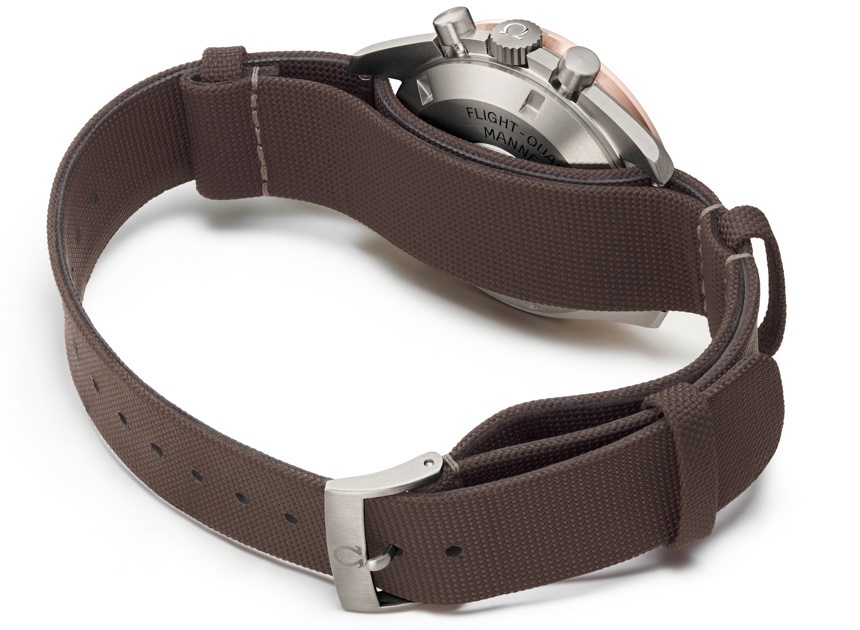
Attached to the case is a “NATO-inspired” fabric strap, the original versions of which were created by the British Ministry of Defense in 1973. Omega claims to have theirs made from a “particularly high-quality material” with a new design for additional comfort–but then again, that is something one would rightfully expect from a luxury brand, which Omega undoubtedly is. An objectionable attribute of Nato straps is that they cover the case back and therefore the movement; given that it is visible through a sapphire case back.
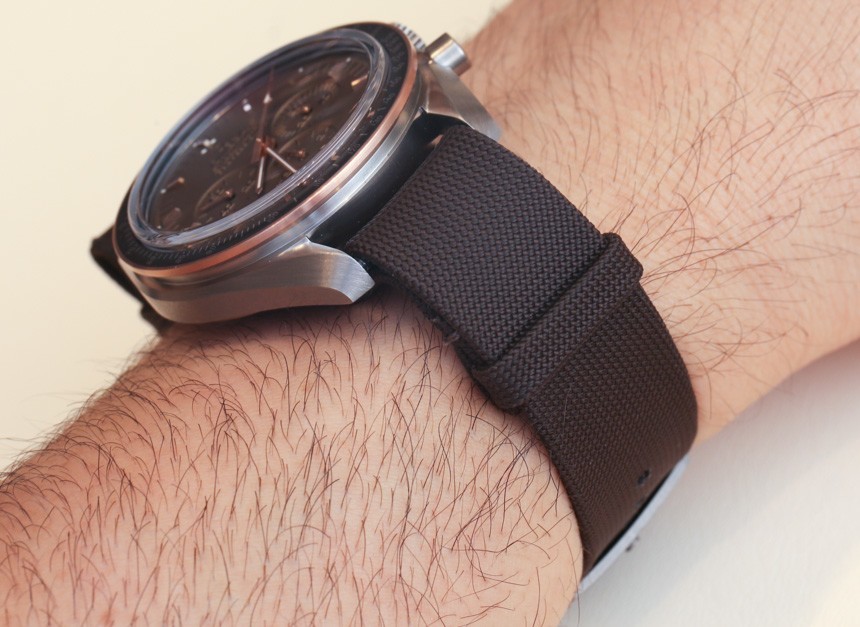
And with that, we have arrived to what is apparently the only really questionable aspect of this otherwise restrained and well thought out version of the Omega Speedmaster: the movement inside is dubbed the caliber 1861, a manual-winding chronograph movement which I am sure would make for a great sight–and certainly much nicer than any script that I can imagine–and still it is left unseen by the solid titanium case back. A shame, as not only does the 1861 share its lineage with the caliber 321 (the one that powered the original Omega Speedmaster Professional Moonwatch), it also is a rare sight at a time when most standard chronograph movements by Omega are automatic, offering a different viewing experience.

Yes, that brown-ish thing on the right wrist of Buzz Aldrin is in fact his Omega Speedmaster Professional, the first watch worn on the Moon
On a more positive note, those opting for this commemorative piece will be happy to see the bold scripts on the back, reading “Flight qualified by NASA for all manned space missions. The first watch worn on the moon,” along with the serial number out of the 1969 numbered pieces. The Omega Speedmaster Professional Apollo 11 watch should be in stores by June, just in time so that the fanatics of the Apollo 11 mission can wear it by the 45th anniversary on the 20th of July. The Apollo 11 limited edition will be priced at 6,400 Swiss francs or right around $7,200, each. omegawatches.com

